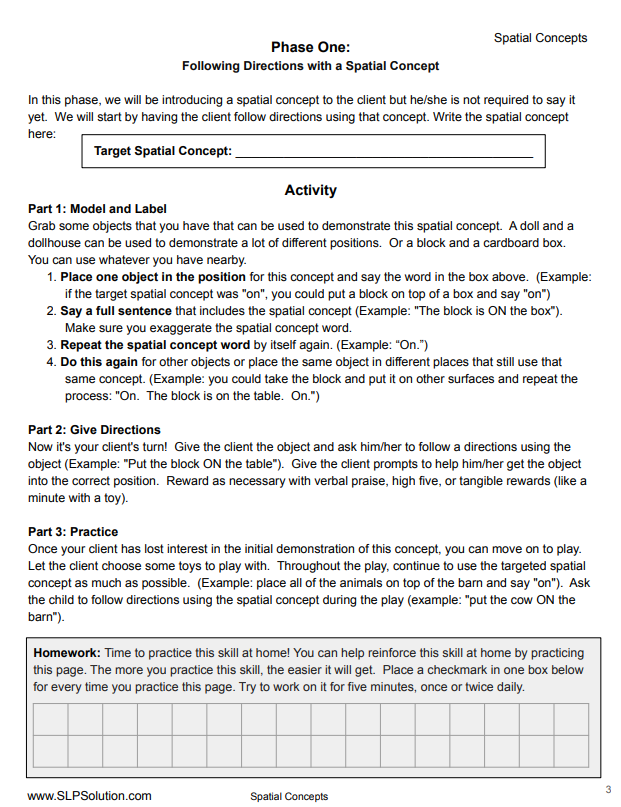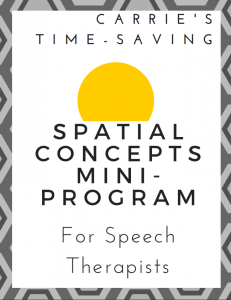Goal: Expressively Use Spatial Concepts in Conversational Speech
Sample Goal:
Student will expressively use the following spatial concepts to describe the location of objects in response to a direct question (such as, “where’s the block?”): <LIST SPATIAL CONCEPTS THAT YOU WANT TO TARGET HERE>
Download the No-Prep Therapy Kit:
We have a start-to-finish therapy kit that will give you everything you need to practice this skill in therapy and send home homework. Click the packet below to open it. Then, print it out and place it in the child’s notebook or binder.
Therapy Phases:
For this therapy, you will choose one spatial concept at a time to target in therapy. You will complete all three phases with that one concept before moving on to the next. This will reduce overwhelm and help your clients learn each word more quickly. While it can be tempting to introduce opposites together (such as “in and out” or “on and off”), this can sometimes cause trouble for our children with language delays who benefit from targeting each word individually. Instead, say “in” and “not in” or “on” and “not on”.
- Following Directions with a Spatial Concept: Student will correctly follow basic directions using the targeted spatial concept (such as “place the block ON the shelf”) with at least 80% accuracy.
- Answering Yes/No Questions about a Spatial Concept: Student will answer basic yes/no questions about the targeted spatial concept (such as “is the block ON the shelf?”) with at least 80% accuracy.
- Expressively Using a Spatial Concept: Student will use the targeted spatial concept word expressively to describe the location of an object in response to a direct question (such as “where is the block”) with at least 80% accuracy.
What’s Next?
- Once the child has mastered these three phases with one spatial concept, you can repeat this same process for another spatial concept.
How to Choose a Spatial Concept to Target:
When choosing spatial concepts to target, start with easier concepts and then move up in a somewhat developmental order. A child should know simple spatial concepts like “in”, “on”, and under by 2 years. A child should know a few more, like “off”, “out of”, “together”, and “away from” by 3 years. “Next to”, “beside”, “behind”, “in front of”, “around”, and “between” come around 4 years. Words like “nearest” and “through” aren’t mastered until 5 years and “right/left” doesn’t come in solid until 6 years.
Supplemental Materials
Here are some other resources that may help you when working on this skill:
Instructions and Worksheets for Teaching Spatial Concepts
An older version of our process for teaching spatial concepts. If you’re looking for additional information and worksheets, check this out!





